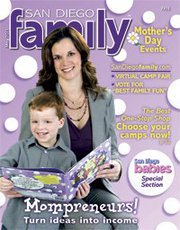Why start a book club?
Book clubs encourage children to read and to get excited about it. It is also a way for kids to become more comfortable with public speaking as they share their thoughts about the book with their peers and other adults. Book clubs can help with communication skills as well. Instead of just answering with “yes, it was good,” they will learn to expand their comments and share their opinions.
Book clubs can feature literature geared towards the children’s interests and age level. They take very little time commitment and are a creative way for children to engage in reading. It is a special bonding activity for parents and kids.
Starting a Book Club
When starting a book club, you need to consider your child’s age, their reading level, and gender. Finding a day of the week and time is also important in creating a schedule. Most book clubs meet about once a month, but you determine how often your club will meet.
Starting a group is not difficult. You can start with friends and ask each of them to invite another parent/child. You can also try to start one by posting something in the school newsletter, placing an ad on Craig’s List, or by talking to other parents who have children in the same grade as your child. You really only need about four kids to get a group started.
If you are the person starting the book club, you will be the main contact for the rest of the group. It is important to get everyone’s contact information, such as email addresses, home and cell numbers, good times to meet, names of children, names of parents, ages of children, any allergies a child has (for snack preparation), location/zip code/child’s school, which month the parent might be interested in hosting the book club, etc. Ideally, the groups should be limited to 10 children, but it should be up to each group individually. If more people want to join, additional groups can be created as needed.
Younger groups should be limited to one hour, but older groups may last longer with more in-depth discussions throughout the meeting. The key is to tailor it to your own group.
To keep work to a minimum, assign jobs. Decide who will host, who will bring the snacks/beverages and who will organize the craft or activity. With everyone taking a turn, the book club experience can remain a positive one!
Ideally, the snacks, and especially the activity, should coordinate with the theme of the book. When all of this has been determined, contact all of the parents in the group and let them know who is in charge of what, and more importantly, what the first book will be!
One suggestion is to let the person hosting decide the book for that month. Another idea is to put the name of all the books that the group agrees on into a hat and pick each month for the following meeting. The person hosting can put together the discussion questions (you only need a few) or each person can bring a question that way each child can take a turn starting the discussion by asking their question and sharing their opinion first.
Set a schedule for at least six months so that everyone can get it on their calendars. Ask everyone to try and make it a priority. Encourage everyone to read the book prior to the meeting so that the discussion can be lively.
To start your own book club, or join one that has already been started near you, emailinfo@sandiegoparent.com.
Reference:Â The Mother-Daughter Book Club: How Ten Busy Mothers and Daughters Came Together to Talk, Laugh and Learn Through Their Love of Reading
Â
Choosing a Book
Look under Product Favorites on the site for more ideas or to submit your own. You can also go to Shelfari to find books that might be of interest. It is a virtual bookshelf, where you can add friends and see what they have read and what they’re reading now. It’s like the Facebook of book lovers. Below are some ideas to get you started:
K-2 Grade Girls:
Amelia Bedelia books
Auntie Claus by Elise Primavera
Charming Opal by Hollie Hobbie
K-2 Grade Boys:
Curious George by H.A. Rey
Dogshow by Elizabeth Winthrop
How I Became a Pirate by Melinda Long
3-4 Grade Girls:
Junie B. Jones by Barbara Park
Ramona Quimby series by Beverly Cleary
Because of Winn Dixie
American Girls series
3-4 Grade Boys:
Captain Underpants by Dav Pilkey
Horrible Harry & the Mud Gremlins by Suzy Kline
5-6 Grade Girls:
Charlotte’s Web by E.B. White
James & the Giant Peach by Roald Dahl
Charlie & the Chocolate Factory by Roald Dahl
Harry Potter series by J.K. Rowling
Goosebumps series by R.L. Stine
5-6 Grade Boys:
Danny, the Champion of the World by Roald Dahl
James & the Giant Peach by Roald Dahl
Charlie & the Chocolate Factory by Roald Dahl
Harry Potter series by J.K. Rowling
Goosebumps series by R.L. Stine
Activity Ideas
Set the theme for each meeting. Where does the story take place? Who are the characters? What kinds of foods would they eat? How would they dress? Discuss these things with your child.
Kids can come to the meeting dressed as a character in the book. Kids love to play dress up, so this is a perfect opportunity to do so outside of Halloween. The kids can spend a few minutes guessing who each person is.
Is there a fun craft project that can be done? This is great for the younger kids who may not be as verbal. They can draw something that they liked in the story. Kids can also make puppets, jewelry, collages, etc. or participate in other easy activities. The purpose is to have it tie in to the book. Find out if an author is coming to your local bookstore and have a book club field trip.
Have them keep a book club journal where they write things about the books as well as questions they want to ask during their book club discussion.
Take lots of pictures of the kids and the parents at the book club and start a scrapbook. If a child dresses up as a character, take a picture and insert it. And if you and your group have gone on a field trip to a bookstore to hear an author read, or took a trip to the site where a story took place, insert those pictures as well. Make sure to label the pictures so that everyone remembers!
Snack Ideas
Food is always a fun way to get creative. You can even have the kids cook something as part of a project. For example, make hot chocolate and stained glass cookies for Polar Express, create a new soup while discussingThe Tale of Despereaux, serve cheese with other finger foods when reading Diary of a Wimpy Kid. The ideas are absolutely endless. Asking the children for ideas about what foods can be served at their meeting can get lots of creative juices flowing.
If you can’t think of anything that goes with the story, healthy ideas such as bagels and cream cheese, pita chips with hummus, peanut butter and jelly mini sandwiches, carrots dipped in ranch dressing, and other munchies never fail.


















